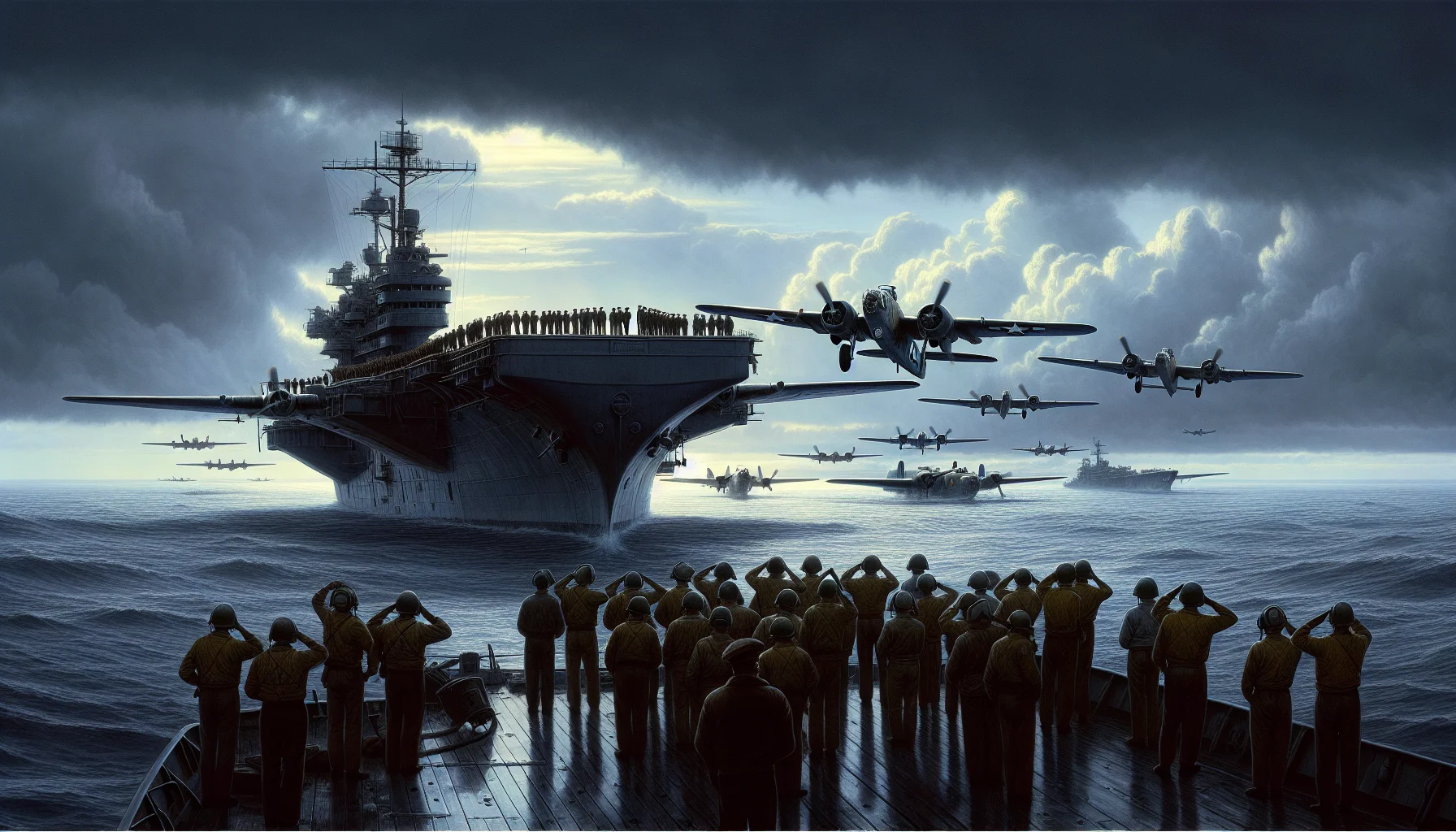
The Doolittle Raid
by: The Calamity Calendar Team
April 18, 1942
A Bold Leap into the Skies
It was an overcast morning on April 18, 1942, when sixteen B-25 Mitchell bombers lumbered off the deck of the USS Hornet, releasing their hold on the carrier and soaring into the uncertain expanse above the Pacific. This audacious mission, led by Lieutenant Colonel James Doolittle, was a page ripped from the book of military improbabilities—a plan so daring it seemed almost reckless, a high-stakes gamble with global implications.
A Plan Carved from Desperation
The story of the Doolittle Raid begins four months earlier, in the shadow of the attack on Pearl Harbor. The United States, reeling from the devastation, sought a way to strike back at Japan. The task was daunting: how could America reach Japanese soil, so far across the Pacific, with its current resources?
Enter Lt. Col. James Doolittle, a man renowned not just for his flying acumen but for an intellect shaped by risk-taking and innovation. His proposal was simple yet radical—the use of carrier-launched bombers to hit Japan, an idea that had never been attempted. The targets were to include Tokyo, the very heart of the enemy.
The plan was to send a message—a message that the Japanese homeland was not untouchable. It would be a salve for American morale and a siren for the military establishment, prompting a rethink of defensive strategies.
Treading New Ground
By early 1942, a select group of airmen, handpicked for their skills and grit, converged at Eglin Field, Florida. Here, they practiced takeoffs on a runway simulating the short decks of an aircraft carrier. Each maneuver was cloaked in secrecy, a veil that intensified the magnitude of what lay ahead.
On April 1, 1942, the Hornet, bearing its clandestine cargo of B-25 bombers, departed from Alameda, California. As the months of preparation culminated, the task force pressed westward toward Japan, a veritable armada escorting these winged emissaries of reprisal.
Thanks for subscribing!
Then came the complication: a Japanese patrol boat detected the approaching U.S. naval fleet, forcing an earlier-than-planned launch. It was a moment of frenzied adaptation, each bomber truncating its fuel margin with this new departure time, now hundreds of miles further from their intended recovery bases in China.
The Raid Unleashed
At midday on April 18, the bombers unleashed their payloads over Tokyo and other targets—Nagoya, Kobe, and Yokohama. The damage was mainly superficial, but the psychological shockwaves ran deep. Japan, previously untouchable on its home soil, had been breached. This was more than a mere raid; it was a declaration of intent, a bold reminder that distance was no shield against resolve.
Flight into the Unknown
Success in the mission's primary objective did little to lessen the peril of its return phase. With fuel gauges dipping perilously low, Doolittle and his crews headed for China, where the hope of safe landing coexisted with the possibility of capture or worse. Some crews made it to friendly territories amidst the fields and hills of China. Other airmen were less fortunate, forced to bail out or crash land in unfamiliar terrain, risking both injury and internment.
In the fog of this retreat, three sailors fell into Japanese hands and were later executed—a chilling denouement, adding a somber tone to their heroism.
The Ripple Effect
The Doolittle Raid shattered more than just airspace; it disrupted strategic thought. For Japan, the raid triggered a new paranoia regarding homeland defense, prompting a misguided expansion of its defensive perimeter. This blundering recalibration led directly to the Battle of Midway—a turning point that would mark the beginning of Japan's retreat in the Pacific theater.
For the U.S., the raid was a tonic. The accolades for Doolittle and his men were heartfelt, the nation inspired by a rare victory in those early dark days of the war.
Shadows of Sacrifice
In the years since, historians have peeled back the layers of the Doolittle Raid, revealing the immense burdens borne by civilians far from the bombing runs themselves. In China, brutal reprisals by Japanese forces resulted in the deaths of thousands, a stark reminder of the war’s indiscriminate cruelty and complex morality.
The Long View
The legacy of the Doolittle Raid endures, an emblem of courage and strategic audacity. It taught essential lessons in air power and innovation, its stories now etched into the annals of military history. As we look back, we see a mission that was as much about testing human spirit as it was about reshaping global conflict—a tale told from the winds of the Pacific, echoing through the ages.
Stay in the Loop!
Become a Calamity Insider and get exclusive Calamity Calendar updates delivered straight to your inbox.
Thanks! You're now subscribed.